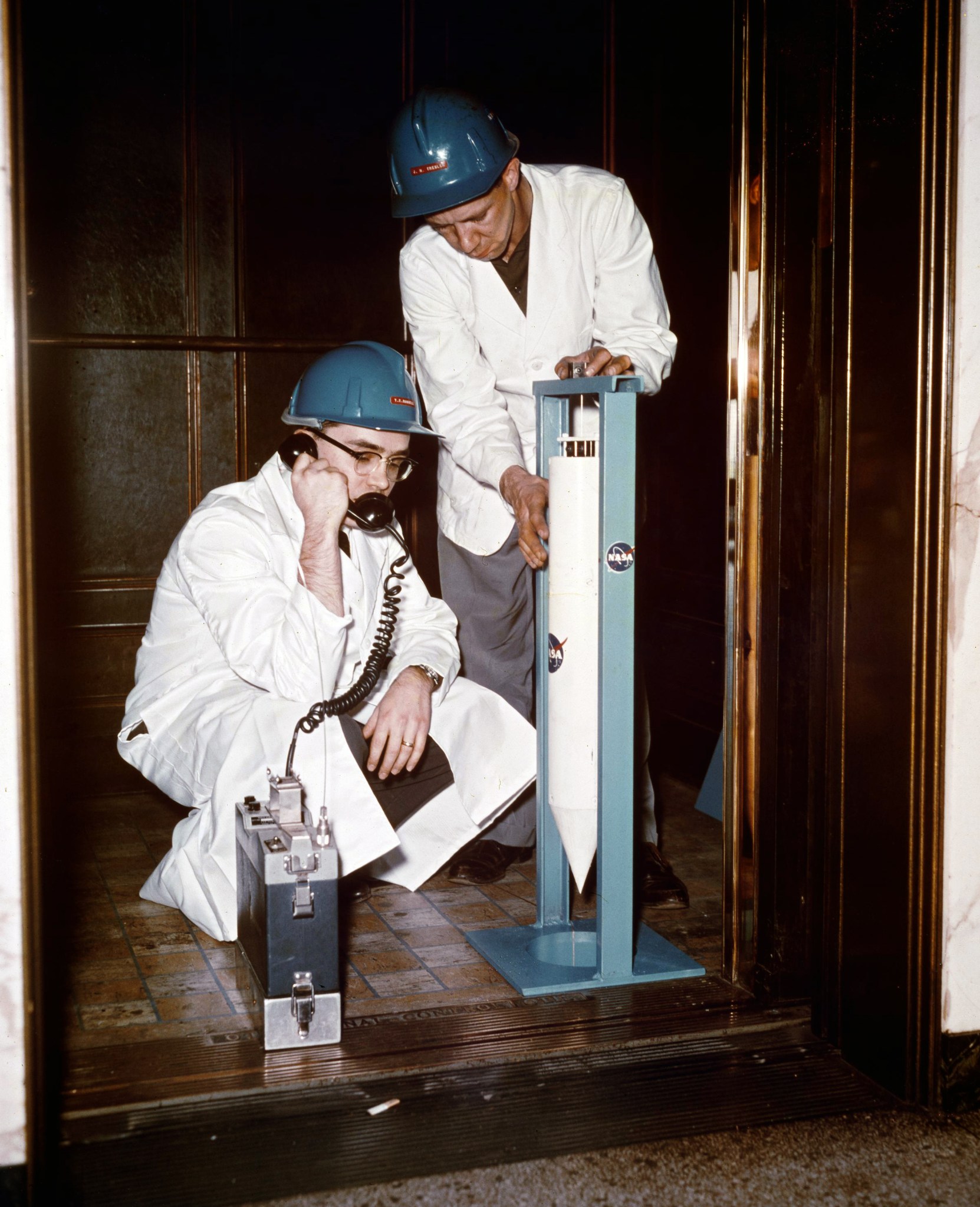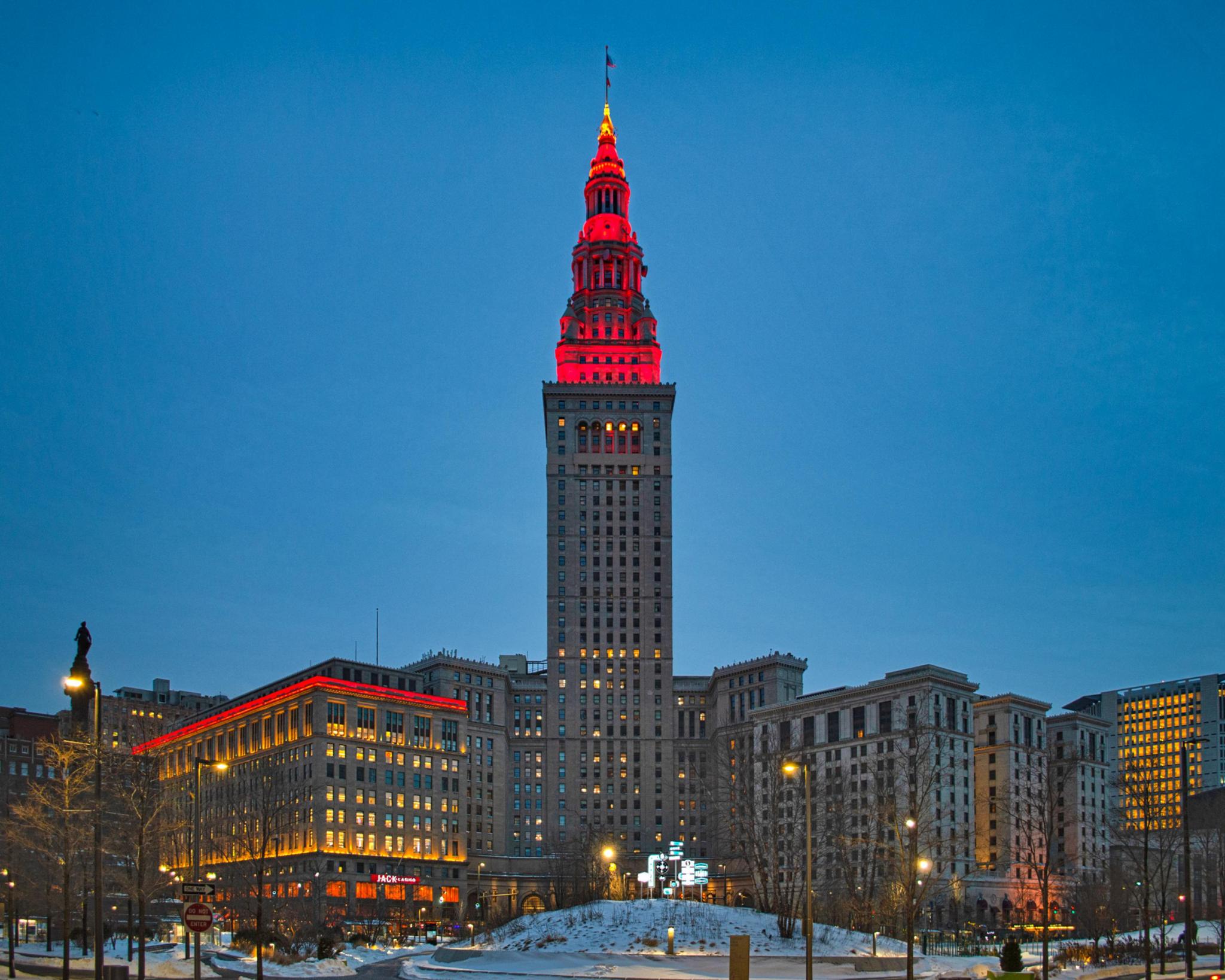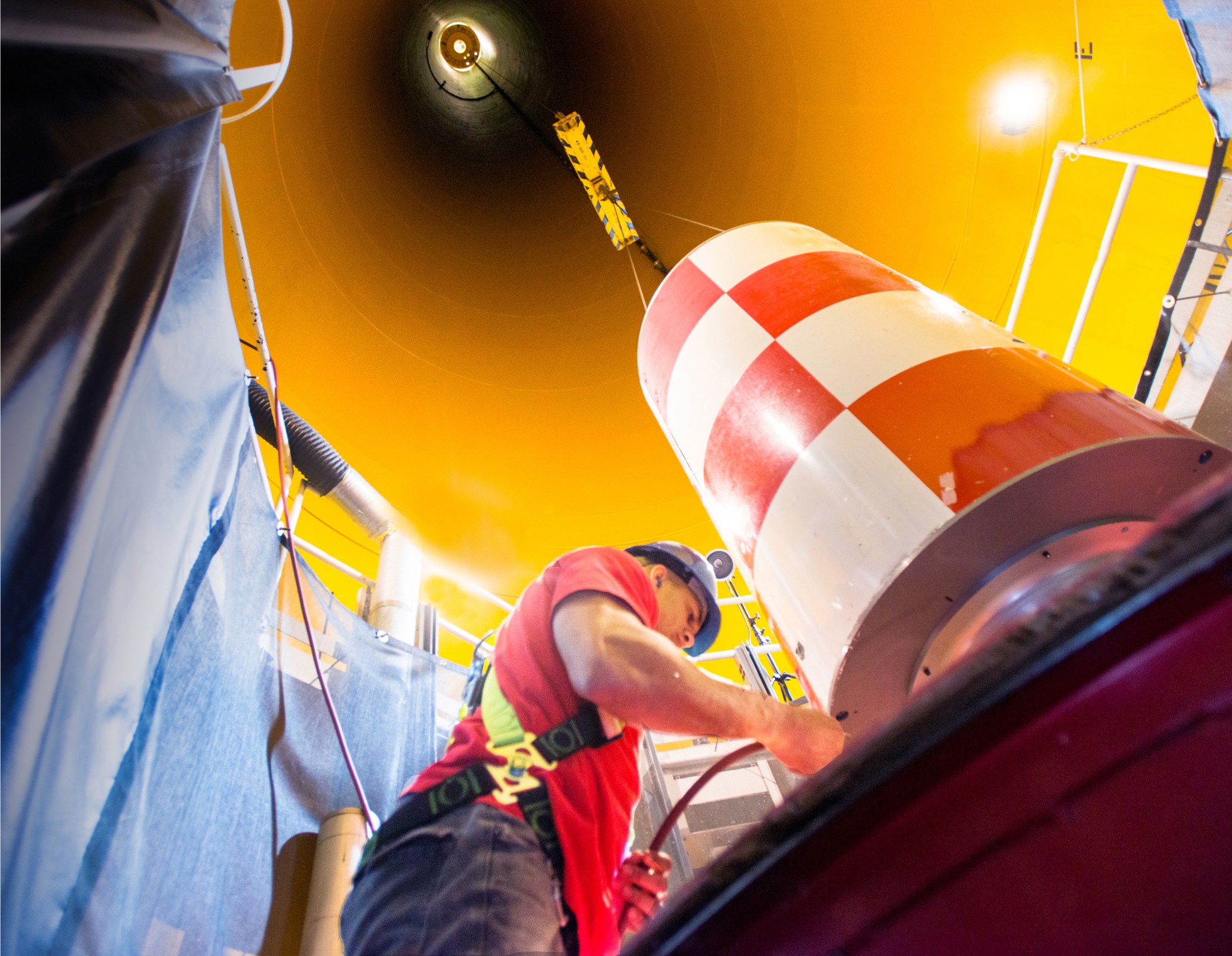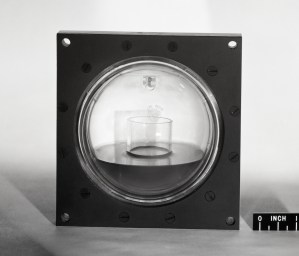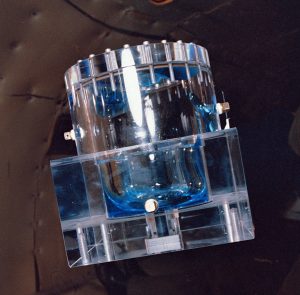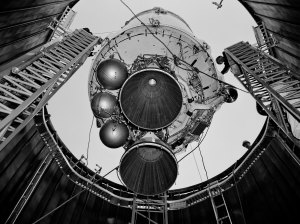In May 1964, weekend visitors peaking around a work screen in a first-floor corridor of Cleveland’s iconic Terminal Tower building were surprised to see that NASA technicians had commandeered one of the main elevators. The men were using the 52-story structure, the nation’s tallest building outside of New York City, to conduct experiments to facilitate the design of its new Zero Gravity Facility.
In the early 1960s, researchers at NASA’s Lewis Research Center were trying to determine how fluids behaved in the absence of gravity so that proper storage and pumping systems could be designed for early space vehicles. In 1962 the center proposed a new 450-foot drop tower that was designed to produce up to ten seconds of microgravity. Congress approved funding for the Zero Gravity Facility in the summer of 1963, and construction began in April 1964.
Even as excavation of the facility’s deep, subterranean shaft began, NASA engineers were still designing a system that would safely decelerate and stop the 2,500-pound experiment package as it completed its 450-foot freefall. Lewis tested small-scale versions of the initial design, which included blocks of Styrofoam stacked in a tube, over 200 times in the existing 100-foot drop tower and at a 200-foot test stand.
The researchers, however, needed data from larger models and higher heights to ensure the design could be scaled up for the new facility. They determined that the 52-story Terminal Tower, which had been the world’s tallest building outside of New York City until 1953, was the only viable option for this effort.
The Terminal Tower’s distinctive spire-like shape and uncanny height has made it the distinctive feature of the city’s skyline since its construction in 1930. The building anchors Cleveland’s Public Square and serves as an office building, train station, retail area, and tourist attraction.
In May 1964, Terrence Russell of Lewis’ Engineering Design Division, led a five-person crew that painstakingly set up the experimental deceleration cart at the bottom of the elevator shaft. The NASA team then rode the elevator up to the desired height and used a wire to suspend the 43-pound drop package from a trap door in the bottom of the elevator cart. When everything was set, they used a torch to sever the wire and sent the model plummeting straight down into the Styrofoam blocks inside the 12-inch diameter, 18-foot-long tube below.
Over two weekends, 20 drops were conducted from heights up to 400 feet. Afterward, Russell felt confident that the tests verified that the foam blocks provided adequate protection and deceleration.
As construction of the new facility progressed over the next two years, however, NASA engineers continued to test a variety of different deceleration materials at the center. When the Zero Gravity Facility began operation in the fall of 1966, the deceleration cart was with filled millions of small polystyrene spheres. Over 50 years later, it remains NASA’s premier facility for ground-based microgravity research.
You can get an inside view of the Zero Gravity Facility by going to our virtual tour page.
Robert S. Arrighi
NASA’s Glenn Research Center




























